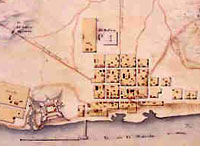French Legation Museum [TX]
The French Legation Museum preserves the historic French Legation, originally built in 1840 to serve as the headquarters for the government of France in the Republic of Texas.
The Legation offers visitors a glimpse into Texas life and culture before it became a state. The Legation also offers guided tours year-round, as well as a variety of special events throughout the year, including lectures and performances. The website offers visitor information, a calendar of events, a brief history of the structure, and an education section which offers lesson plans and activities for students.
